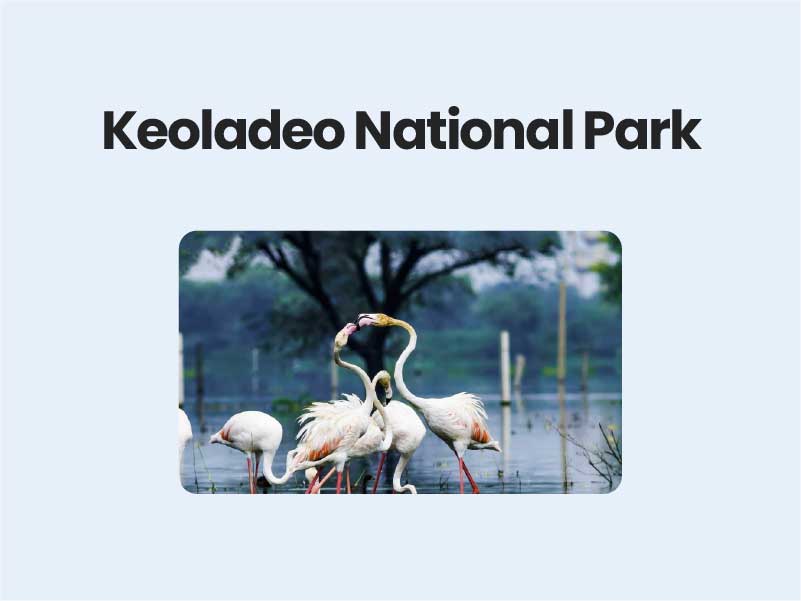Companion@360 → 7 Month programme to sharpen your writing skills → REGISTER NOW

Keoladeo National Park
The Keoladeo National Park or Keoladeo Ghana National Park is formerly known as the Bharatpur Bird Sanctuary is in Bharathpur District of Rajasthan. It is an important wintering ground of Palaearctic migratory waterfowl and is renowned for its large congregation of non-migratory resident breeding birds. A green wildlife oasis situated within a populated human-dominated landscape, some 375 bird species and a diverse array of other life forms have been recorded in this mosaic of grasslands, woodlands, woodland swamps, and wetlands of just 2,873 ha.
- This ‘Bird Paradise’ was developed in a natural depression wetland that was managed as a duck shooting reserve at the end of the 19th century.
- While hunting has ceased and the area declared a national park in 1982, its continued existence is dependent on a regulated water supply from a reservoir outside the park boundary.
- The park’s well-designed system of dykes and sluices provides areas of varying water depths that are used by various avifaunal species.
- Due to its strategic location in the middle of Central Asian migratory flyway and presence of water, large congregations of ducks, geese, coots, pelicans, and waders arrive in the winter.
Keoladeo National Park
- The park was the only known wintering site of the central population of the critically endangered Siberian Crane, and also serves as a wintering area for other globally threatened species such as the Greater Spotted Eagle and Imperial Eagle.
- During the breeding season the most spectacular heronry in the region is formed by 15 species of herons, ibis, cormorants, spoonbills, and storks, were in a well-flooded year over 20,000 birds nest.
- The property has effective legal protection under the provisions of the Wildlife (Protection) Act, 1972 and the Indian Forest Act, 1927.
- This is the only park in India that is completely enclosed by a 2 m high boundary wall that minimizes the possibilities of any encroachment and biotic disturbances, but there is no possibility of a buffer zone.
- As the wetlands of Keoladeo are not natural, they are dependent on the monsoon and on water pumped in from outside, traditionally provided from the “Ajan Bandh” reservoir.
- The major threats to the property are the water supply (both quantity and quality); invasive vegetation (Prosopis, Eichhornia, Paspalum); and inappropriate use of the property by neighbouring villages.
Read Also Panna Tiger Reserve

